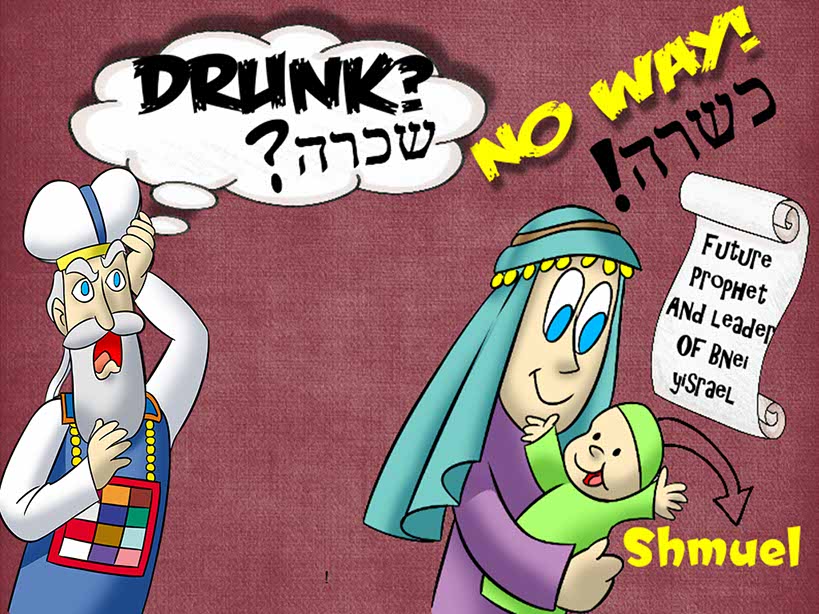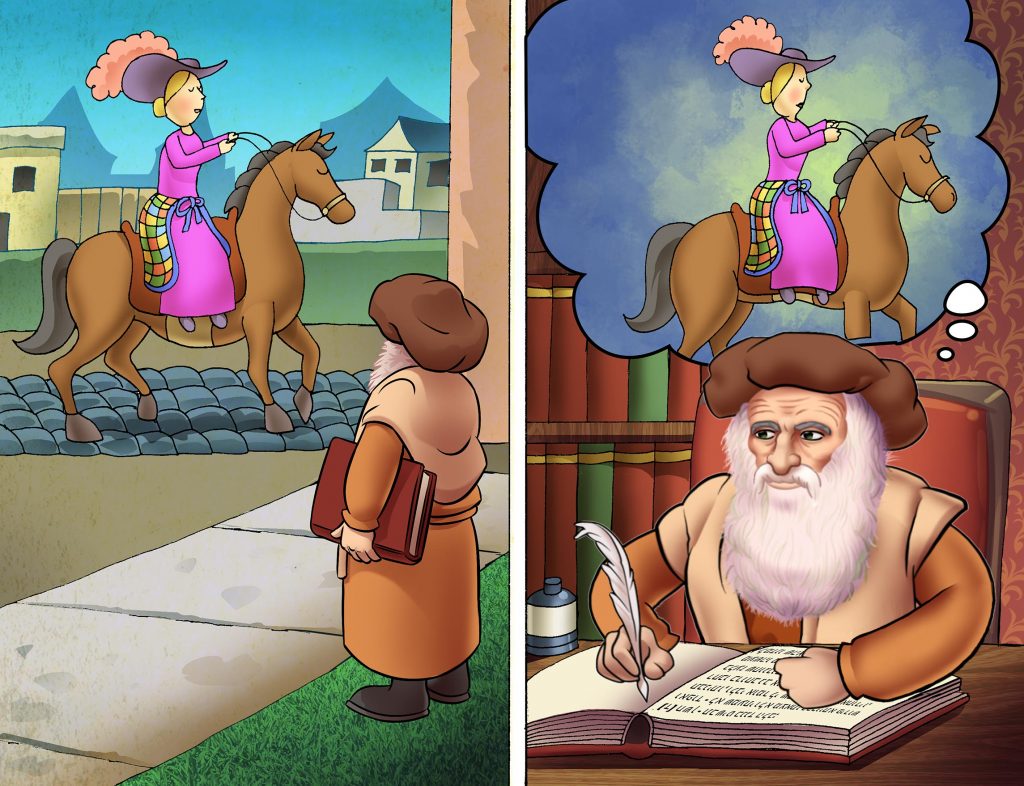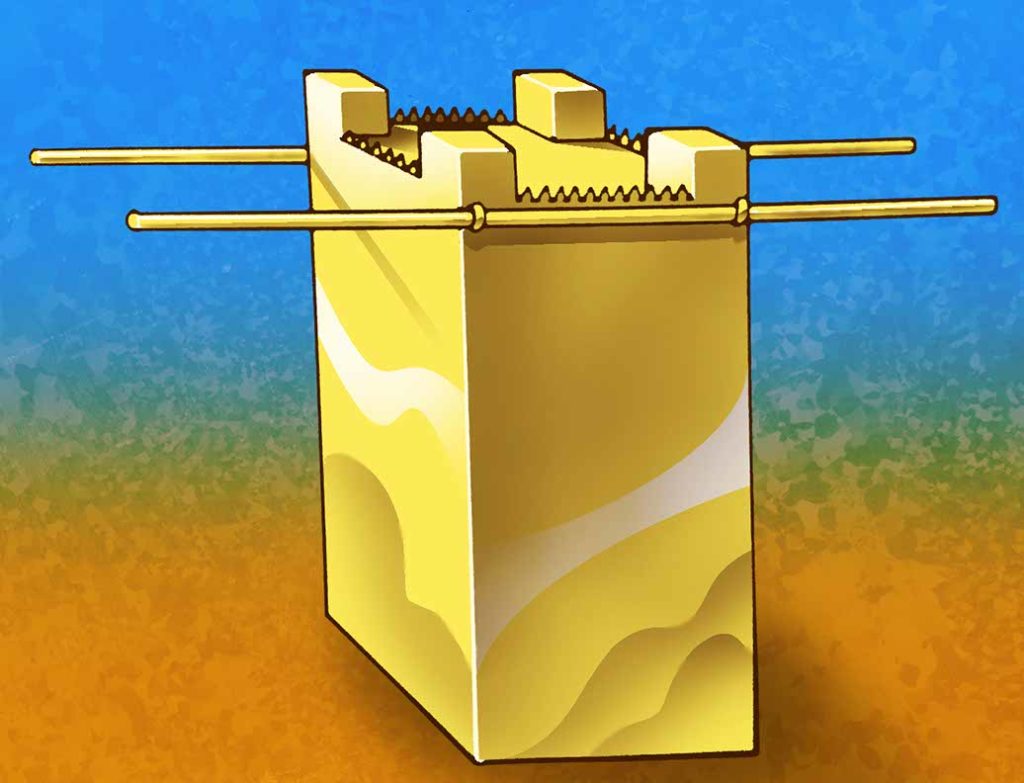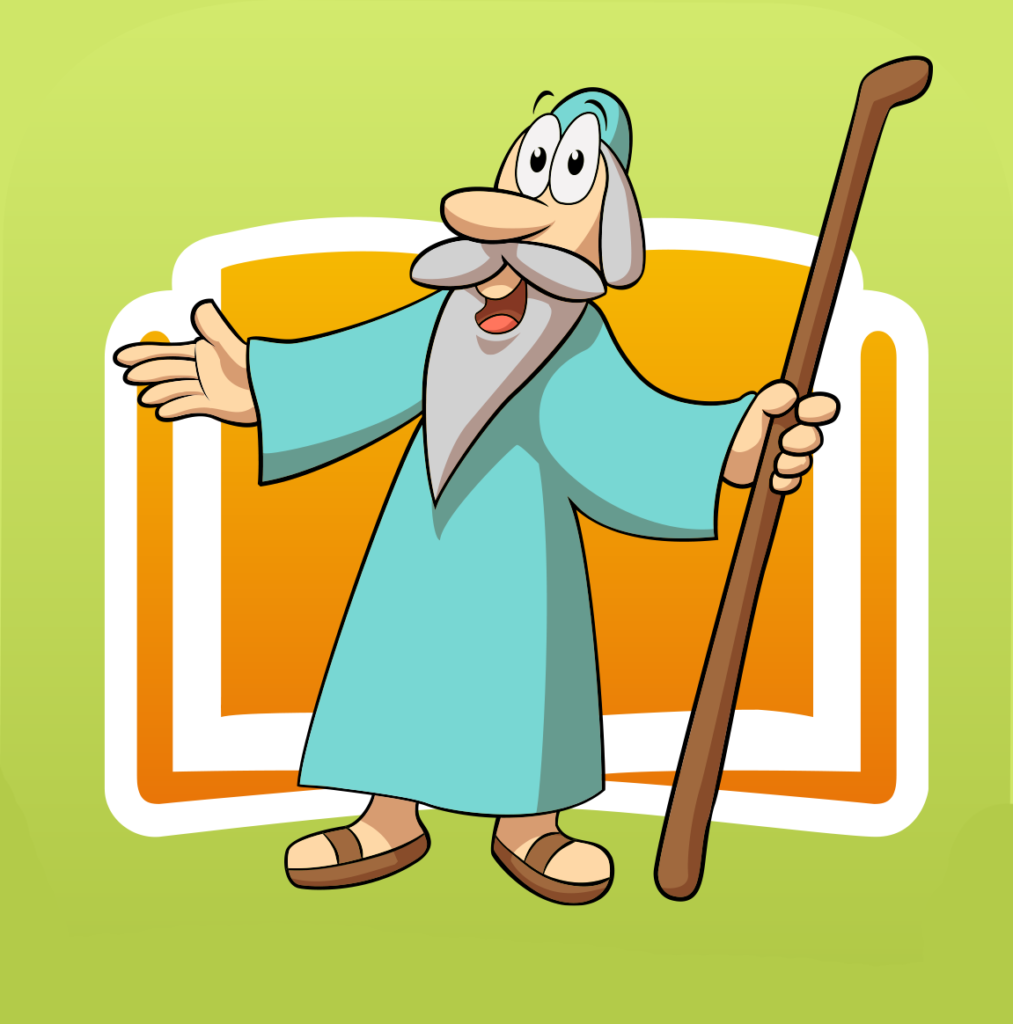Complete Audio – Tetsaveh

This content is for members only
Shazak Video!

This content is for members only
P.O.P. – 3 Pics!
This content is for members only
Drunk or Righteous?

This content is for members only
Behind the Scenes with Rashi

Legend has it, that one day, the great Torah commentator, Rashi (Rabbi Shlomo Yitzchaki – 1040-1105) who lived in France around a thousand years ago, noticed a noblewoman riding by on horseback and for some reason he was gazing at her clothes. Later, he was bothered by this. “Why was I paying so much attention to that noblewoman?” He couldn’t figure it out.
When Rashi came home that day, he was busy writing his commentary on Parshas Tetsaveh, about the special clothes of the Kohen Gadol. When he tried to describe the Eifod – the apron – he got stuck. He wrote, “I have not heard any explanation of its form…”
Suddenly, he remembered the noblewoman riding the horse. Aha! Now he knew. He had a feeling, deep down in his heart that the Eifod of the Kohen Gadol looked something like the riding apron worn by ladies on horseback!
These are the continuation of Rashi’s words in that Pasuk – Chapter 28 verse 4: “My heart tells me that it was something tied behind him… like an apron of sorts… which the ladies of the nobility wear while horseback riding.”
That’s why he had noticed the noblewoman – so that he could explain to the whole world exactly how the Kohen Gadol’s clothes looked!
And now you know… the rest of the story!
Golden Incense Altar

There was one more important structure needed in the Mishkan – an altar for burning incense. This Mizbei’ach was 2 Amos tall, which is around 4 feet tall and much smaller than the copper Mizbei’ach, on which Bnei Yisrael sacrificed animals.
HaShem commanded Moshe, “Make it out of acacia wood and cover it with pure gold. Make a gold crown surrounding it. Place the altar near the Menorah in the Kodesh section of the Mishkan.”
Every morning and afternoon, a Kohen burned incense on the altar, and the fragrant smoke of the spices went straight up to HaShem!
This altar had several names – Mizbei’ach HaKetores, the altar of incense; Mizbei’ach HaZahav, the altar of gold; and Mizbei’ach HaPnimi, the inner altar, situated inside the Kodesh.
You might think that the description of the Mizbei’ach HaKetores should have been in last week’s Parsha, Parshas Terumah, when all of the other objects for the Mishkan were described.
But, as mentioned several times, the Torah is not a history book that follows a specific order. Sometimes, certain things are told in unexpected places in the Torah, just for the purpose of setting them apart and showing us how important they are. The incense offering was a special sign of the love between HaShem and Bnei Yisrael!
Tune in Next Parsha

The Jewish People now had everything they needed to serve HaShem – a special, holy place – the Mishkan – and special, holy people – the Kohanim, who wore special, holy garments. But soon, we will learn about something not holy at all – the terrible sin of the Golden Calf!
Quizzer
This content is for members only
The Puzzle Page!
This content is for members only
The Parsha Post

This content is for members only

